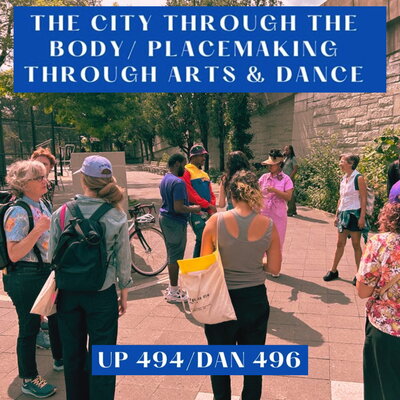

GGIS 495: Migration and the City
Dr. Nikolai Alvarado
In this course, we will read and discuss a number of classic and cutting-edge texts that allow us to conceptualize migrants as city-makers. We will critically engage with the manifold migrant urbanisms emerging throughout the world with the objective of understanding the city through the lens of migration and migration through the lens of the city.
Most literature on migration has failed to address the importance of the urban scale for migrants, while urban theory has been uninterested in the migrant urbanism that is part of the ongoing transformation of urban spaces across the globe. In this course, you will be an active agent in shaping your knowledge of migrants and urban areas, and you will leave with a deeper understanding of the migration-city nexus.

UP 494 / DAN 426: The City Through the Body
Dr. Magdalena Novoa
This cross-disciplinary class, fosters the creation of new methods to engage communities facing urban issues. Through an horizontal environment students will be exposed to collective practice, student-led discussions, movement exercises, field trips, guest speakers and creative projects.
The course incorporates feminist, queer, and ethical perspectives, emphasizing the intersection of urban planning and movement. Students create projects disrupting and reimagining spaces.
“Bodies are the most important elements that make a city. So thinking choreographically is necessary as you think about the living vital systems of cities."

ARCH 574: Kancha Wasi Ñan (Architecture and Urban Design). Amplifying and visualizing urban infrastructure in Lima, Peru
Dr. David Isern
This advanced design studio examines and works at an urban scale to evaluate, understand, and project how high-density sites of urban transition, informality, and culture can redevelop the urban-scape to create spaces of survival and belonging. The studio foundation is fundamentally based on the question of WHAT happens when the capitalist model of urbanity sidesteps accountability in the public realm, problematising these densely-packed, highly complex spaces that are often underutilised or wrongly strategised. These types of spaces are found across the Latin Global South not as a novelty but as part of the daily operations of life. Therefore, it is important for this studio not to be singular or monographic; rather, it will need to operate in multiscalar and pluriversal modalities that analyse the human design for urban patterns already present and well established in Lima and help them be agents of change for the public realm.